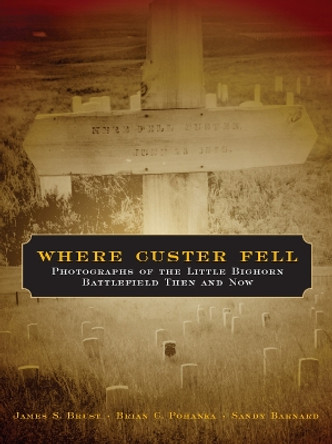Description
Among the many myths surrounding the Little Bighorn is that journalists of that time were incompetent hacks who, in response to the stunning news of Custer's defeat, called for bloodthirsty revenge against the Indians and portrayed the ""boy general"" as a glamorous hero who had suffered a martyr's death. Mueller argues otherwise, explaining that the journalists of 1876 were not uniformly biased against the Indians, and they did a credible job of describing the battle. They reported facts as they knew them, wrote thoughtful editorials, and asked important questions.
Although not without their biases, journalists reporting on the Battle of the Little Bighorn cannot be credited - or faulted - for creating the legend of Custer's Last Stand. Indeed, as Mueller reveals, after the initial burst of attention, these journalists quickly moved on to other stories of their day. It would be art and popular culture - biographies, paintings, Wild West shows, novels, and movies - that would forever embed the Last Stand in the American psyche.
About the Author
James E. Mueller is Professor of Journalism at the University of North Texas. A veteran reporter himself, he is the author of Towel Snapping the Press: Bush's Journey from Locker-Room Antics to Message Control and Tag Teaming the Press: How Bill and Hillary Clinton Work Together to Handle the Press.
Reviews
Back when newspapers were the primary source of information, opinion, and entertainment in America, when even small towns had competing papers with divergent political and religious affiliations, the public formed its views on current events mostly from what appeared in the press. Shooting Arrows and Slinging Mud is a rich, readable study of the newspaper response in 1876 to Custer's disastrous defeat at the Little Bighorn - - a response that proved instrumental in creating the enduring fascination with Custer's Last Stand."" - Brian W. Dippie, author of Custer's Last Stand: The Anatomy of an American Myth
""The journalists who covered the Battle of the Little Bighorn in the immediate aftermath of Custer's defeat set the framework for all subsequent discussions and debates about Custer's Last Stand, a framework that continues to reverberate in modern journalism, the academic world, and popular culture today. James Mueller here provides a most thorough review of that early coverage. His study underscores how Custer's critics and fans alike remain so indebted to the first generation of reporters and editors to comment on those stunning events."" - Sandy Barnard, coauthor of Where Custer Fell: Photographs of the Little Bighorn Battlefield Then and Now
Awards
Commended for Spur Awards (Nonfiction-Historical) 2014.
Book Information
ISBN 9780806143989
Author James E. Mueller
Format Hardback
Page Count 272
Imprint University of Oklahoma Press
Publisher University of Oklahoma Press
Weight(grams) 572g
Dimensions(mm) 229mm * 152mm * 25mm








